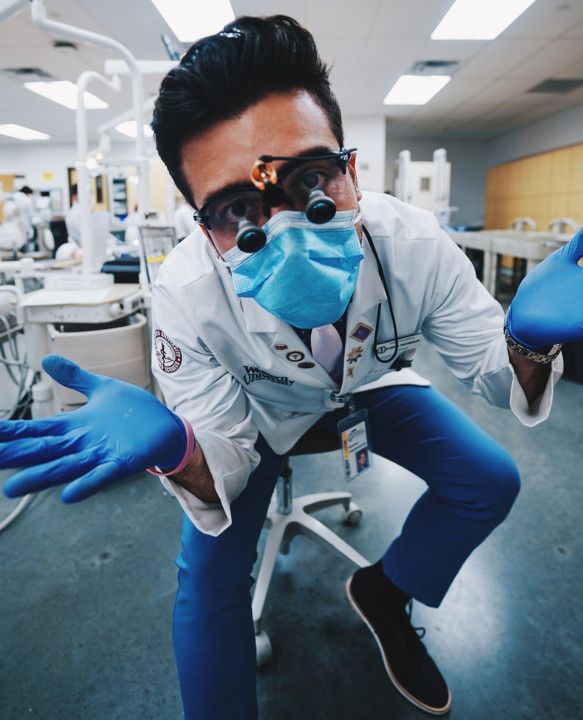Kamran Pakdamanian, in the class of 2023 at Western University of Health Sciences in Pomona, California, on the virtues of the Geek Squad, the importance of dental photography and why the best dentistry is like a symphony.
 WHY DENTISTRY?
WHY DENTISTRY?
To be honest, dentistry sort of fell into my lap. Growing up, I enjoyed going to the dentist because of the trust and bond we had formed, but I never wanted to pursue it as a career.
Fast-forward 16 years. During my undergraduate career I worked as a Geek Squad Agent at a local Best Buy. I did this for seven years, but [at one point] my dentist needed assistance with some tech issues. Going back and forth to resolve them, I was exposed to dentistry from a perspective not many people witness. Think about it: Anyone who goes to a dental office is either a provider or a patient; there’s no in-between. But those visits as a Geek Squad Agent became the pivotal moments I needed to jump-start my love of dentistry. Watching my dentist perform procedures with his staff was like watching a well-orchestrated symphony. It was beautiful, and from that moment on I wanted nothing more.
Q: You’ve used your tech knowledge to develop software to help autistic kids. What’s that all about?
One day, I crossed paths with my kindergarten teacher. She explained that she was at a new facility teaching children who have disabilities—mainly children with autism. She was astonished that I was a Geek Squad Agent; she was looking for someone to help her develop programs for her students.
I went through the school district, got clearance and began visiting her at the facility on weekends to create interactive software for the children to learn fundamentals: teaching colors, numbers, shapes. We used the Smart Board systems in the classrooms so the kids could walk up and touch their answers. By providing them with this sort of tactile, kinesthetic learning experience, we were able to teach them a vast amount of information in a short time. The school was delighted to see how much we were able to accomplish with technology in a much more interactive way.
Q: And you also once helped Western U. secure a grant from the Robert Wood Johnson Foundation.
During the summer of 2020, at the peak of Covid-19, my university selected a group of students they believed were able to deliver curriculum to their cohort of students for SHPEP—the Summer Health Professions Education Program. After being selected by one of our deans, I gave a lecture in head-and-neck anatomy, focusing primarily on the TMJ. Because of Western U.’s efforts in the past five years of SHPEP, we were awarded a $330,000 grant to ensure that the participating scholars were able to actively
engage in a virtual setting.
The Western U. SHPEP team procured loaner laptops for all scholars to increase technology equity for successful participation and completion of the program. The purchase of the laptops was all made possible through the Johnson Foundation, and each student was also shipped their own white coats, suture kits and lab materials to increase the professional hands-on experience.
Q: You’re a photographer as well. Is it true that dental companies have used your images in marketing campaigns?
When I’m not studying or doing anything dental-related, you will probably find me holding a camera. Photography has been a hobby since high school. It’s an escape from reality and gives me an avenue to express the world through my eyes. Integrating my perspective of photography into dentistry captured the eyes of a few companies. I have been blessed to work with A-dec, Henry Schein, Orascoptic, Kilgore International and many more.
Q: What are your postgraduate plans?
To practice, and eventually own a practice, in Southern California. Depending on where photography takes me, I hope to become a freelance photographer for dentists who want quality photos to showcase their offices to the world.



